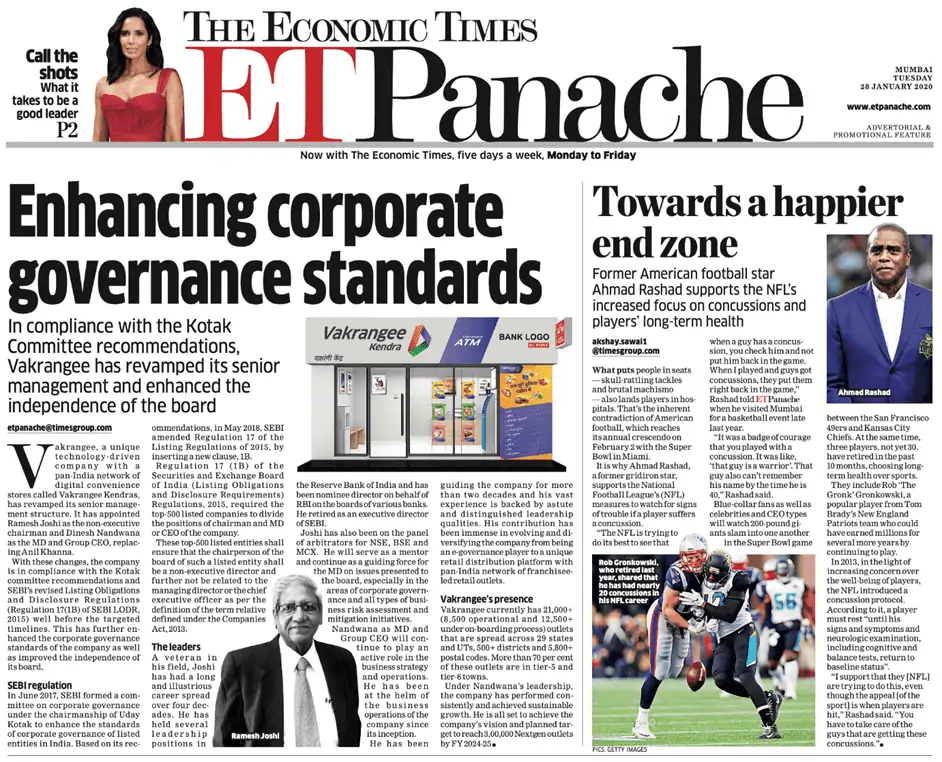Ads don’t always look like ads. They can be disguised in a way that they look like regular content. The advertiser or marketer might actually pay the publisher to publish this disguised ad in their newspaper, magazine, or digital publication.
When that happens, it is called an advertorial.
What Is Advertorial?
An advertorial is an advertisement presented in a format that looks like legitimate and original editorial content. The advertiser, or marketer, pays the publisher to publish their ad.
Unlike a traditional advertisement, advertorials look like regular editorial content and are even written in a way to give information about a product or service and not merely sell it.
The advertorial can be written as if the marketer was an industry expert, giving details about the industry trends or how their product is better than its competitors.
Usually, publications include a disclaimer somewhere in the advertorial, telling readers that it is an advertisement and not the regular content.
Characteristics Of An Advertorial
There is no standard format or template for an advertorial. One publication might be different from another, and even one advertiser can have a different advertorial from another advertiser.
But there are some general characteristics that most advertorials include:
- Sponsored content: The advertorial is a paid advertisement, not an independent editorial.
- Promotional nature: The advertorial only presents information to help sell a product or service or build brand awareness.
- Informative nature: Although an advertorial’s main purpose is to present information to build a brand, it also contains useful and interesting information relevant to the reader.
- A lack of hard-selling: Unlike traditional advertisements, advertorials don’t include a direct call to action like ‘call now’ or ‘visit our store’. It doesn’t tell the reader exactly what they should do after seeing the advertorial.
- Disguised appearance: Most advertorials resemble regular editorial content, such that often readers don’t even realise that it is an advertisement.
- A disclaimer: Most print and digital publications include a disclaimer somewhere in the advertorial to make it clear for readers that they are reading an advertisement and not regular editorial content.
Types of Advertorials
Advertorials can take many forms, based on what the marketer wants to accomplish with the ad. Different types of advertorials are usually chosen depending on what result is needed.
Comparative Review Advertorials
One of the most common types is a comparative review advertorial, where an advertiser or marketer publishes their product or service along with their competitor’s product or service.
This type of advertorial is helpful for consumers because they can compare two or more products side by side, making it easy to decide which one they prefer.
Comparative review advertorials are perfect for newcomers in the market who have little brand awareness. Marketers use this advertorial type to generate interest in their product with less spending.
Promotional Or Image Advertorials
Promotional or image advertorials are where the advertiser publishes content about their brand or offering intending to build a favourable brand image.
They might publish success stories highlighting the positive effects their product had on someone’s life or they will talk positively about their business and what makes them unique without directly comparing it to the competitor.
Promotional advertorials are more about creating an image that appeals to their target market rather than generating sales through hard-selling, which is why they don’t have a call to action.
Journalism Advertorials
Another common type of advertorial is a journalism advertorial that looks like the regular publication’s content. It’s written as a news article with a catchy headline and body that looks just like usual editorial.
Journalism advertorials are usually published in magazines and newspapers since they have more space to play with. They might not directly talk about the advertiser’s product, but it will still be mentioned in the context of an interesting story or topic relevant to their target audience.
Advocacy Advertorials
Advocacy advertorials are where the advertiser creates content about an issue they care about so that their product can be associated with it.
Although this type of advertorial goes beyond selling a product, it is still related to what they do so that readers will feel encouraged to purchase their products in order to support them.
The marketer might publish content about how their products contributed to a charity cause, or they might talk about improving the environment, without directly selling their product.
Consumer Guide Advertorials
Consumer guide advertorials are content written with the intention to direct the reader on the right path. For example, an article about how to find a reliable plumber might link to the brand website for people to contact them easily.
The main purpose of this type of advertorial is to direct the reader to take action without appearing too promotional.
Components Of An Advertorial
An advertorial is a combination of an ad and editorial content.
In print, it looks just like a usual editorial column. In digital publications, you will find them in between regular articles, where the advertiser does not want their content to look too promotional.
Advertorials use a similar style as journalist writings. They have
- Catchy headline: Headlines of advertorials are usually written with the same style as journalist headlines, catchy and drawing attention to what is compelling about the topic.
- Introduction: This section seeks to engage the reader by making them interested in the topic. It usually contains a short paragraph that outlines what to expect from the body of the article.
- Body: Advertorials have a body just like regular articles. They are usually more detailed than an ad, but they can be shorter or longer depending on the topic of the advertorial. The body is generally driven by the objective of the advertorial and doesn’t stray too far from it.
- Conclusion: Advertising often uses a call to action because it is their main objective, but other advertorials do not require any because their goal isn’t to generate sales. If there is a call to action in advertorials, it might be to subscribe to an email list or to read another article on the website.
Advertorials can be used to build sales, but they are targeted at building brand image through positive associations with their product. Although advertisers want readers to take action by buying their products, this is secondary to their main objective which is about building a favourable impression of their brand in general.
Advertorial Examples
Advertorials are usually published in print, but you can also find them online.
There are many types of advertorials and they all vary depending on what the advertiser wants to achieve with their content.
Forbes Advertorial

Economic Times Advertorial

Wired Advertorial

Go On, Tell Us What You Think!
Did we miss something? Come on! Tell us what you think about our article on advertorials in the comments section.
A startup consultant, digital marketer, traveller, and philomath. Aashish has worked with over 20 startups and successfully helped them ideate, raise money, and succeed. When not working, he can be found hiking, camping, and stargazing.








